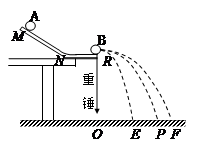More and more people take part in marathons these days – over 30,000 people will run the London Marathon this weekend, for instance. But it’s not just the 26 miles and 385 yards that could be a daunting prospect. “I have to admit to being completely frustrated by the blocking and for 18-19 miles was just keeping away from people and being held up,” one participant grumbled after the 2012 London Marathon. “I had to overtake a lot of people and ended up with bruised(淤肿的)forearms from all the elbows,” said another.
How do such crowding problems arise, and could they be reduced? Some researchers believe that we can find the answers through a more familiar system in which jams appear – road traffic flow. Martin Treiber, of the Technical University of Dresden in Germany, has previously developed models for traffic flow. One of the first attempts to model traffic flow was made in the 1950s by James Lighthill and his collaborator Gerard Whitham of Manchester University. They considered the traffic as a kind of liquid flowing down a pipe, and looked at how the flow changes as the fluid gets denser(浓稠). At first the flow rate increases as the density increases, since you simply get more stuff through in the same period of time. But if the density becomes too high, there’s a risk of jams, and the flow rate drops sharply.
Treiber’s model of a marathon uses this same principle that the flow rate first increases and then decreases as the density of runners increases, thanks to an sudden switch from free to crowded flow. He assumes that there is a range of different preferred speeds for different runners, which each maintains throughout the race. With just these factors, Treiber can calculate the flow rate of runners, knowing the “carrying capacity”(承载能力)at each point on the route.
This allows Treiber to figure out how blocking might depend on the race conditions – for example, for different starting procedures. Some marathons start by letting all the runners set off at once (which means those at the back have to wait until those in front have moved forward). Others assign runners to various groups according to ability, and let them start in a series of waves.
Treiber has applied the model to the annual Rennsteig half-marathon in central Germany, which attracts around 6,000 participants. The traditional route had to be changed in 2013, because the police were no longer willing to close a road to ensure that runners could cross safely. It could pass either over a 60m wooden bridge or through a tunnel. Treiber used his model to predict the likely blocking caused in the various options. The model predicted that a mass start would risk an overload of runners if the bridge were to be used. Only by moving the starting point further back from the bridge could the danger be avoided – and even then, if some of the numbers assumed in the model were only slightly inaccurate, there was still a risk of jams at the bridge. On the other hand, no dangerous blocking seemed likely for the tunnel route. The run organizers consulted Treiber’s team, and eventually chose this option.
小题1:What is the worst thing while running a marathon?
A.The long distance.
B.Too many participants.
C.The dangerous blocking.
D.Serious injuries in forearms.小题2:Which of the following statements is true?
A.James Lighthill is the first expert trying to model traffic flow.
B.The denser the flow is, the faster the flow rate becomes.
C.The flow rate increases in the beginning because fewer people passed together.
D.The flow rate increases first and then decreases later when the flow is too denser.小题3:What is NOT true about the Rennsteig?
A.It has much less participants than the London Marathon in 2014.
B.It has a shorter distance than the London Marathon.
C.The route was changed because the traditional one is not safe any longer.
D.The participants running this marathon will pass a tunnel because this choice is safer.小题4:What’s the main idea of the passage?
A.Make a comparison between marathon and road traffic.
B.Running a marathon is somewhat dangerous if it is not well organized.
C.Introduce a new technology to solve the blocking problem in marathon.
D.Some advice for people who are to run a marathon.
小题1:C
小题2:D
小题3:C
小题4:C
题目分析: 如今虽然越来越多的人喜欢参加马拉松长跑,但是让许多人望而却步的不是26.38英里的路程,而是长达18、9英里的拥堵问题。对此德国大学的Martin Treibe教授进行了实验,提出了一种新式的方法来避免这一问题。
小题1:C细节理解题。根据文章第一段But it’s not just the 26 miles and 385 yards …… “I have to admit to being completely frustrated by the blocking可知当人们跑马拉松长跑的时候最恼人的是拥堵问题,这种拥堵会造成人与人之间身体的碰撞,给人带来身体的伤害,故答案选C。
小题2:D细节理解题。从文章第二段内容At first the flow rate increases as the density increases, ……But if the density becomes too high, there’s a risk of jams, and the flow rate drops sharply.可知在实验中当这种液体变得太稠的时候开始会流动的快,然后会缓慢下来,故答案选D。
小题3:C细节理解题。由文章末段内容The traditional route had to be changed in 2013, because the police were no longer willing to close a road to ensure that runners could cross safely.可知路线的改变是由于警察不愿意去封闭道路来确保参赛者的安全,所以C选项内容错误。
小题4:C主旨大意题。文章在开头提出在跑马拉松长跑时出现的拥堵问题,然后通过实验来分析这种现象出现的原因,最后提出解决的方法,由此判断本文中心内容是介绍一种解决马拉松长跑问题的新技术,故答案选C。

 ;再把B球放在水平槽上靠近槽末端的地方,让A球仍从固定位置由静止开始滚下,与B球碰撞后,A、B球分别在记录纸上留下各自的落点痕迹。重复这种操作10次得到10个落点痕迹平均位置
;再把B球放在水平槽上靠近槽末端的地方,让A球仍从固定位置由静止开始滚下,与B球碰撞后,A、B球分别在记录纸上留下各自的落点痕迹。重复这种操作10次得到10个落点痕迹平均位置 、
、 。
。
 ,半径为
,半径为 ;B球质量为
;B球质量为 ,半径为
,半径为 ,则( )
,则( ) ,
, B.
B. 
 D.
D.  ,
,